Imagine a photo frame that never collects dust on the sideboard, that doesn’t force you to choose between a picture of the little one or that of your beach vacation, and that receives new memories without lifting a finger. The Pexar is a bit like that, but better: a bright 2K screen, an app that does the job in three clicks, and the promise of scrolling through your most beautiful moments as one flips through a living album. I had the chance to test it under real conditions – between kids bombarding with selfies and grandparents asking for updates – and honestly, I was blown away. Ready to discover what this connected frame has in store? Let’s go!
Unboxing the Pexar 2K digital photo frame
As soon as you hold the Pexar box, you can tell it’s not a haphazard product.
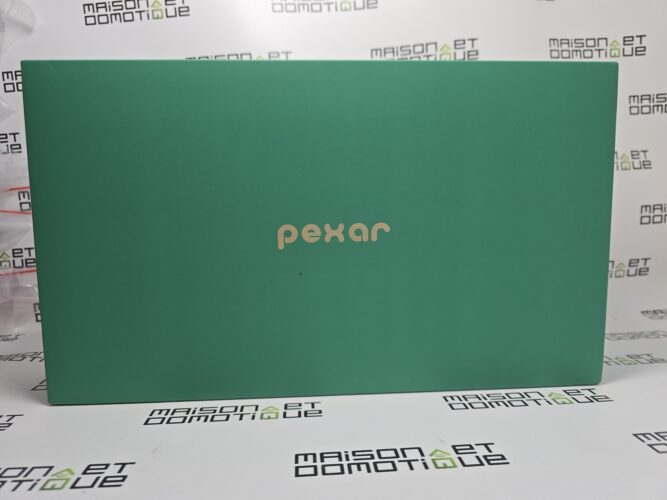
The box is sleek yet well-made, and – the killer detail – it can even serve as a small storage box or traditional photo frame once the frame is set up.
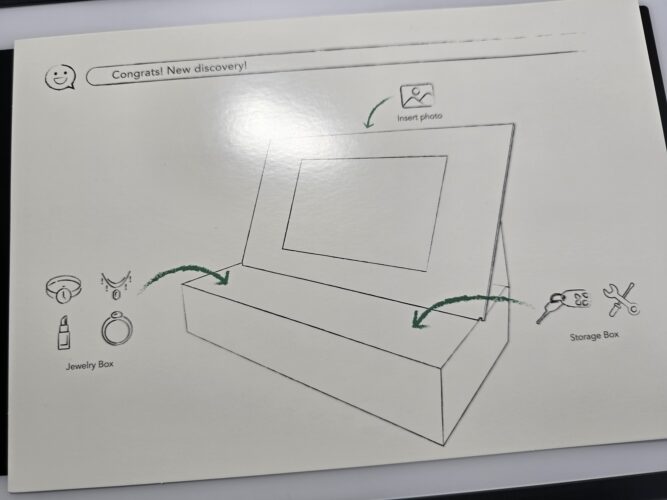
Practical for slipping in some paper memories or accessories. A pretty nice idea that allows for recycling the packaging!

Inside, the frame proudly sits, accompanied by an intelligent magnetic stand, a power charger, and a quick installation guide.
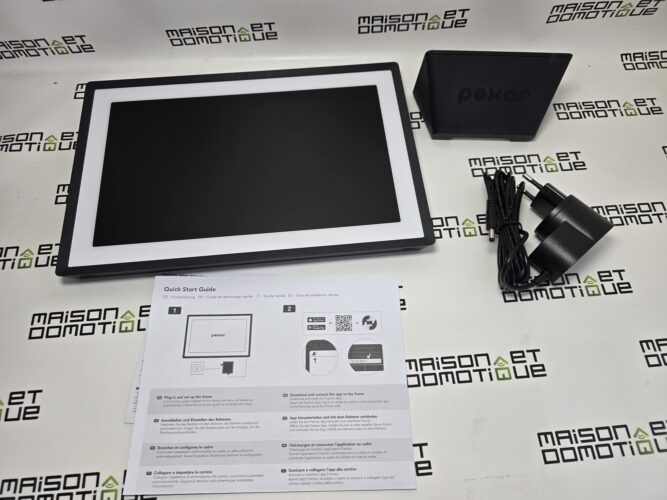
The design of the Pexar embodies understated elegance: clean lines, thin edges, available in matte black or sandy white according to your taste. The frame fits seamlessly into any interior, from Scandinavian living rooms to professional offices, and the magnetic stand allows you to switch from portrait to landscape mode in a blink of an eye, with no hassle.
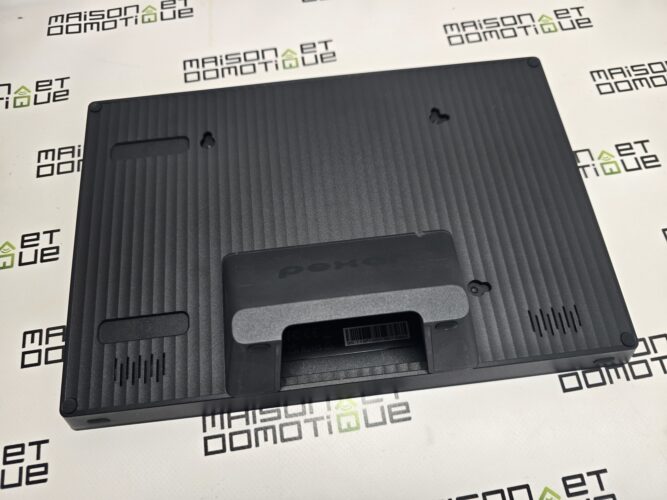
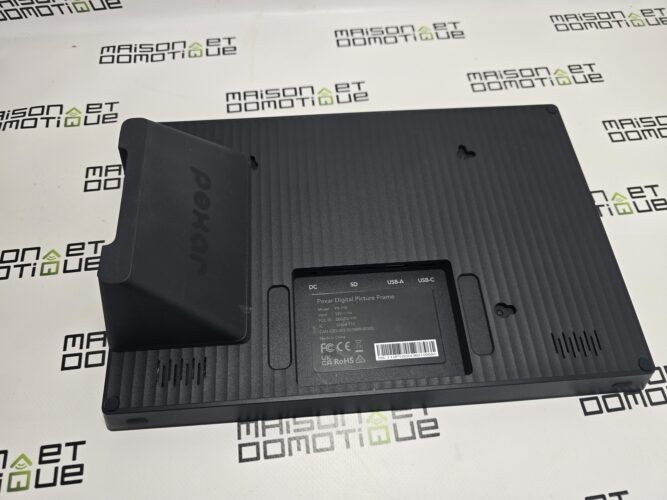
The finishes are impeccable, the stand is stable, and the non-slip pads prevent any unpleasant surprises if a curious little hand comes through.
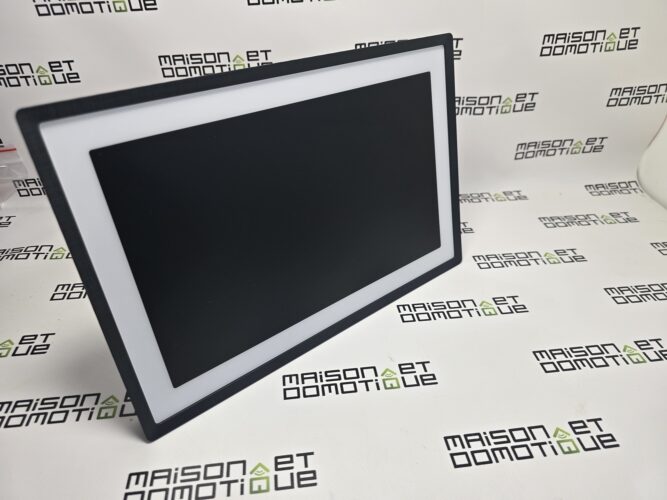
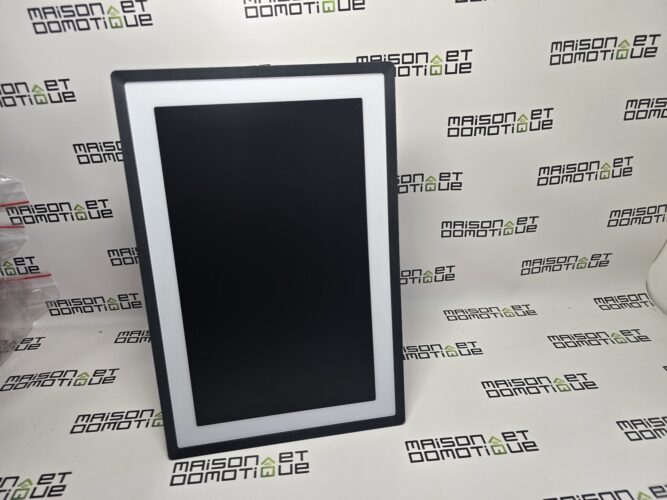
On the screen side, we’re talking heavy-duty: an 11-inch IPS touchscreen, 2K resolution (2000 x 1200 pixels), 212 ppi, 100% sRGB, 400 nits brightness, and above all, an anti-glare treatment that makes all the difference.

Even in bright sunlight, photos remain vibrant and colors natural. The pixels? Invisible to the naked eye, even when you get close. You can tell that Lexar, which manages the Pexar brand, has really gone for quality display.
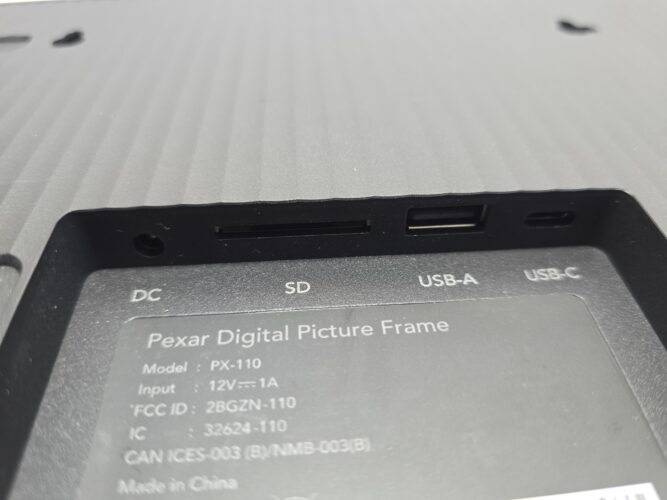
The frame comes with 32 GB of internal storage (up to 40,000 photos according to the manufacturer!), expandable to 1 TB via SD card or USB stick. In terms of connectivity, it has it all: Wi-Fi, USB-A and USB-C ports, SD card reader, and even a small built-in speaker for videos (well, the sound quality won’t shake your Bluetooth speaker, but for a family video, it works).
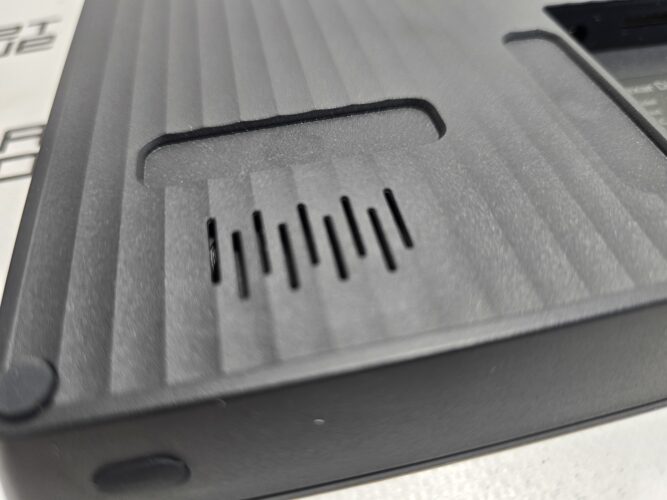
Setup and discovery: child’s play, personalization at your fingertips
Setting up the Pexar is child’s play. You plug it in, connect to Wi-Fi, and voilà, the frame is ready to receive its first photos.

The interface is touchscreen, smooth, and honestly intuitive: even grandma, who struggles with her smartphone, will manage without breaking a sweat.
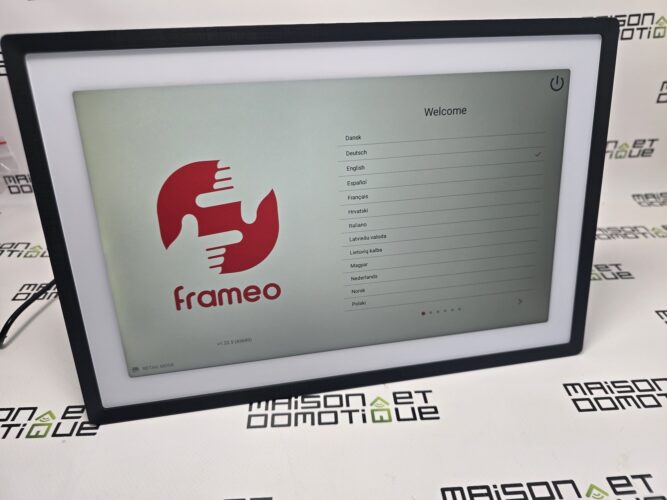
The Frameo app (free on iOS and Android) allows you to send photos or videos in seconds, wherever you are in the world.

A QR code to scan, a code to enter, and you’re off: you can even invite up to 512 relatives to contribute to the family gallery.

Visual and sound notifications alert you whenever a new photo arrives, and the multi-user management is seamless. Convenient for scattered families or to send memories distantly to grandparents (and avoid the eternal “will you send me the photos?”).
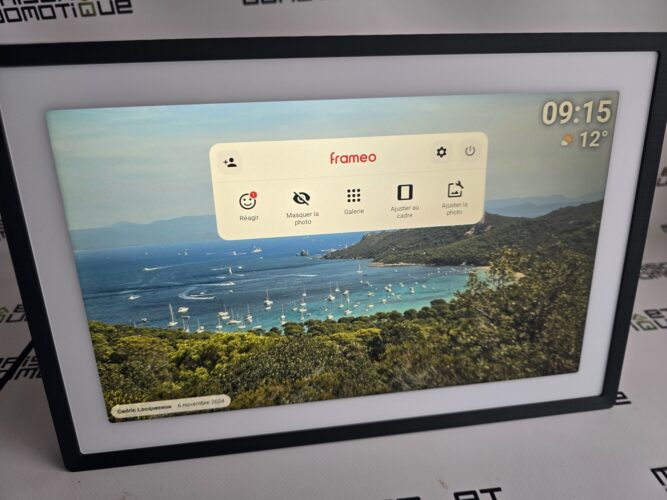
The Frameo app is very simple: you select photos on your phone, choose the Pexar frame as the recipient, and the magic happens. For those who want to go further, the paid version Frameo+ allows you to send more photos at once and upload longer videos, but honestly, the free version is more than enough for regular family use.
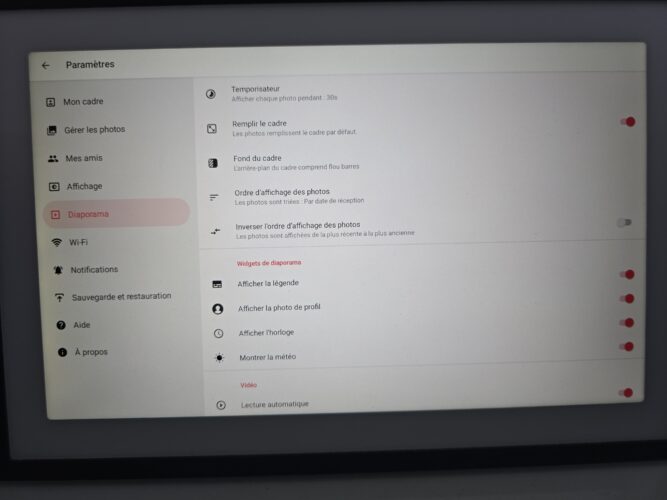
The frame also offers a whole range of settings: display of the time and weather (which can be turned off for photo purists), programmable sleep mode to save energy, and especially an automatic display rotation thanks to an integrated accelerometer.
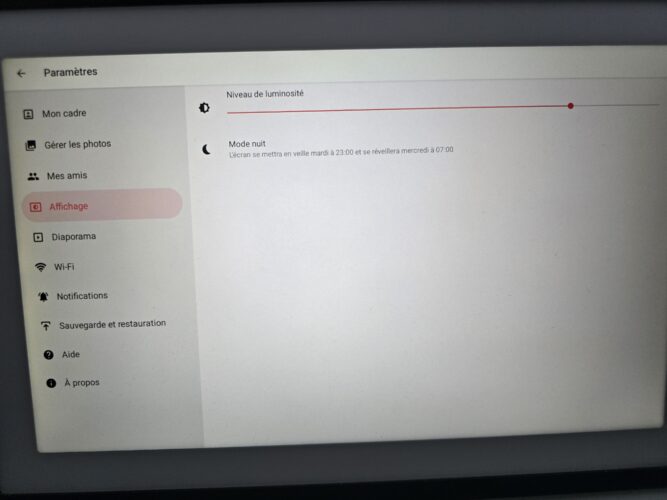
You can place the frame on a piece of furniture or hang it on the wall; everything is provided, including the fittings. A detail we appreciate compared to the Aura Carver model for example, which can only be placed horizontally on a piece of furniture.
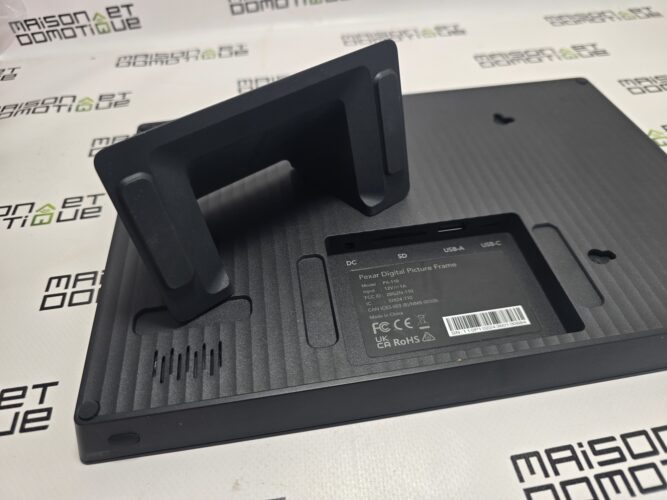
A nice bonus: the intelligent cropping of photos. Whether your shot is in 4:3, 16:9, or Instagram format, the Pexar adapts, offers to fill the screen (even if it means cropping a bit), to add black bars or aesthetic blur, or even to rotate the photo manually. It’s smart, accessible with a tap, and it avoids cropped photos or cut-off heads.
User feedback: the Pexar in daily life, between shared memories and little surprises
After several weeks of use, the Pexar has established itself as a true companion in daily life. In the living room, it catches the eye without ever stealing from the decor, and its photos scroll with astonishing fluidity. The colors are vibrant, the blacks deep, and even the hastily taken smartphone photos come out beautifully. The viewing angles are wide; you can enjoy the images even while passing by in a hurry (and that’s the kind of detail that makes a difference when you have a lively household).
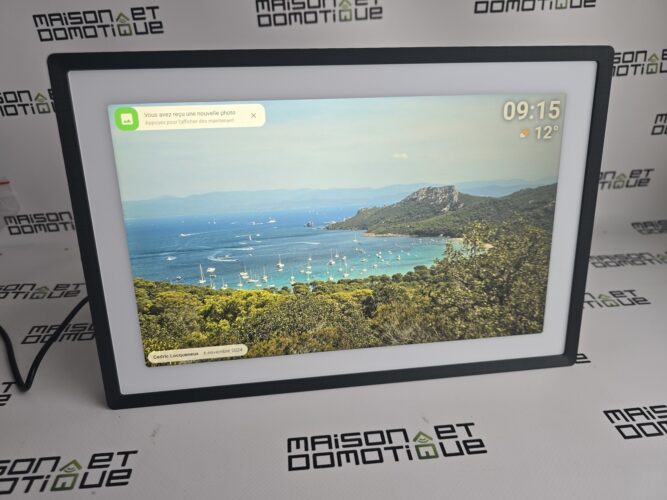
Long-distance sharing is a real joy: kids send their sports achievements or their drawings of the day, grandparents discover every morning a new photo of their grandchildren, and everyone stays connected effortlessly. For scattered families, it’s a real thread, and you find yourself looking forward to the next photo like you would a postcard. I even tested sending videos: the quality is decent, even if the sound remains anecdotal. For a birthday, you can send a little surprise video message (guaranteed effect!).
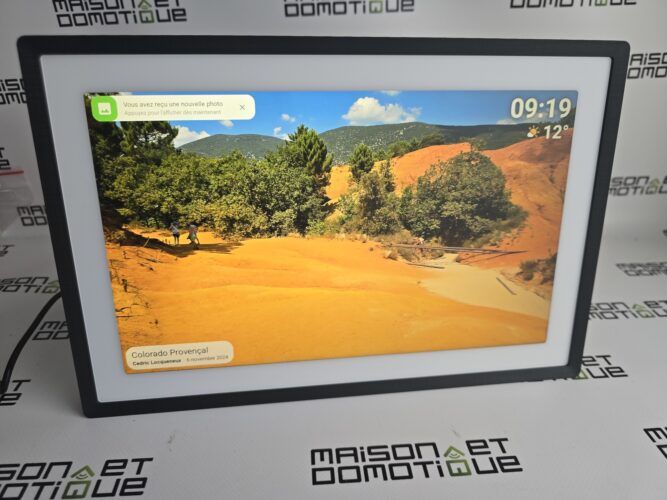
The programmable sleep mode is a real plus: the frame turns on and off at the chosen times, perfect for avoiding the sight of it shining all night in the bedroom or office. The constantly displayed weather and clock can come in handy, although, personally, I preferred to turn them off to fully enjoy the photos. One small downside: no home automation compatibility (no Google Home, Alexa, or Siri), which is a pity for those who like to control everything by voice, but it’s not a deal-breaker.
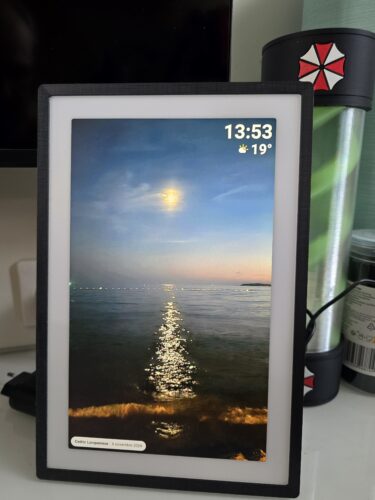
In terms of storage, 32 GB is more than enough for normal use, but compulsive photographers will appreciate being able to add an SD card or USB stick to store thousands of additional shots. The aspect of security is also worth mentioning: no mandatory cloud storage, the photos remain stored locally, which reassures the more cautious (and avoids lengthy monthly subscriptions).
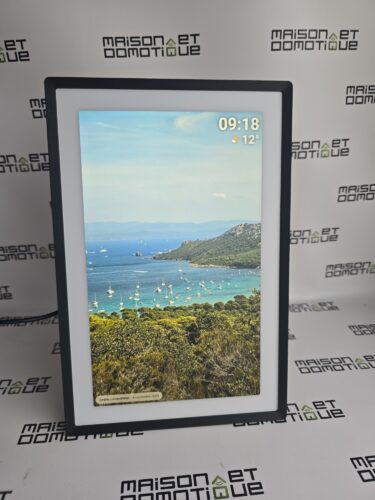
Ultimately, the Pexar adapts to all uses: a Christmas gift for parents, a decorative tool in an office, or simply to keep track of memories without having to pull out your smartphone every three minutes. And let’s be honest, seeing grandma’s face light up when receiving a photo of the latest birthday cake is priceless.
Conclusion
It’s hard not to get attached to the Pexar after a few weeks of seeing it proudly stand in the living room. It succeeds where so many other digital frames have failed: it truly encourages sharing photos, makes the act simple and immediate, and elevates memories without ever distorting them. You quickly forget dusty albums and USB drives forgotten at the back of a drawer. Here, each new sent photo becomes a small event, a smile that appears, a memory that resurfaces. Admittedly, it’s not perfect (the sound from the videos won’t thrill audiophiles, and smart home fans may be left wanting), but it checks the essentials: display quality, simplicity, the joy of the moment. The Pexar is the kind of item that ends up becoming part of the family. And frankly, that feels good. Currently at less than €150, it’s a gift idea to keep in mind (or to treat yourself with ;-)


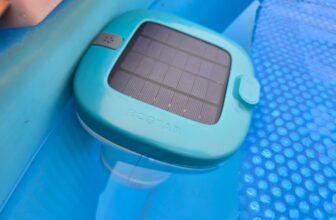


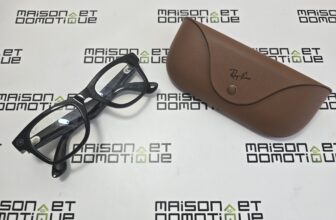

Please remain courteous: a hello and a thank you cost nothing! We're here to exchange ideas in a constructive way. Trolls will be deleted.